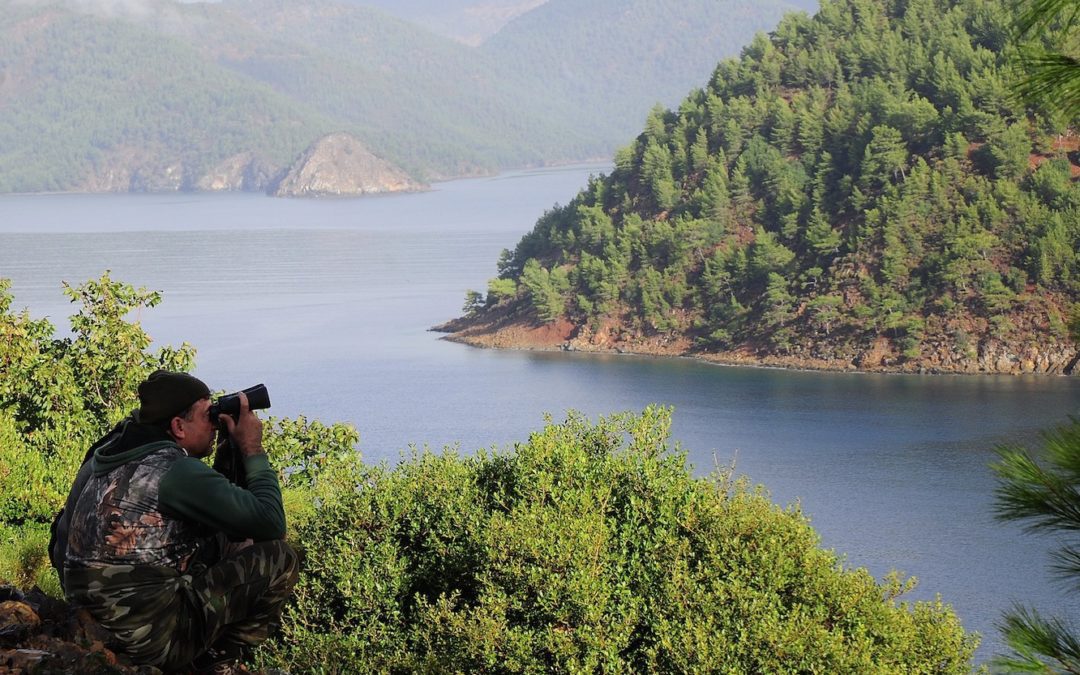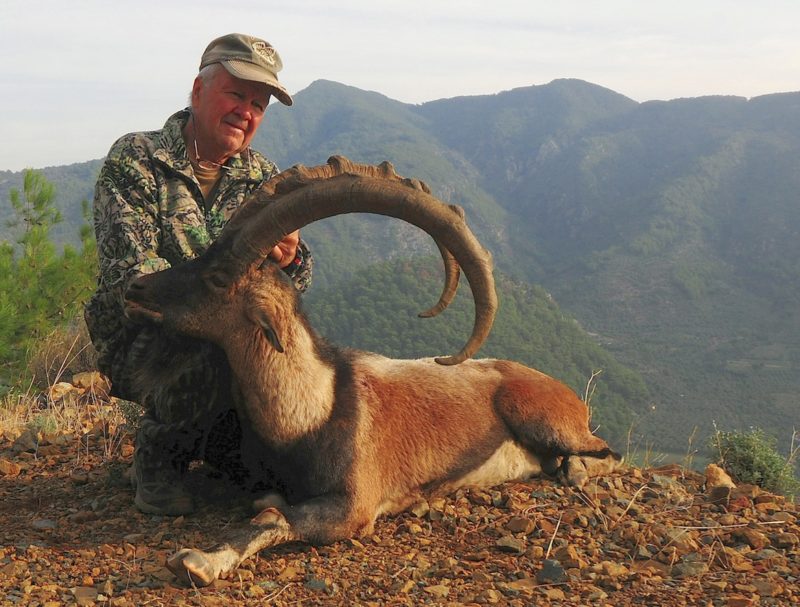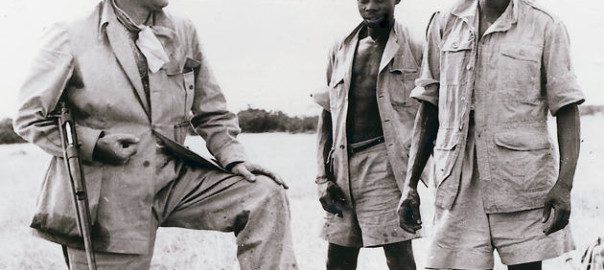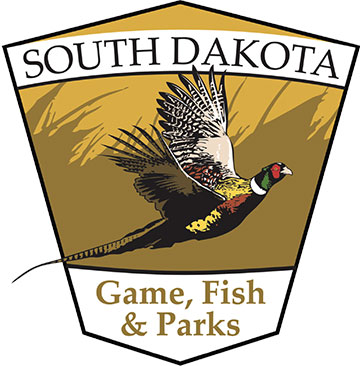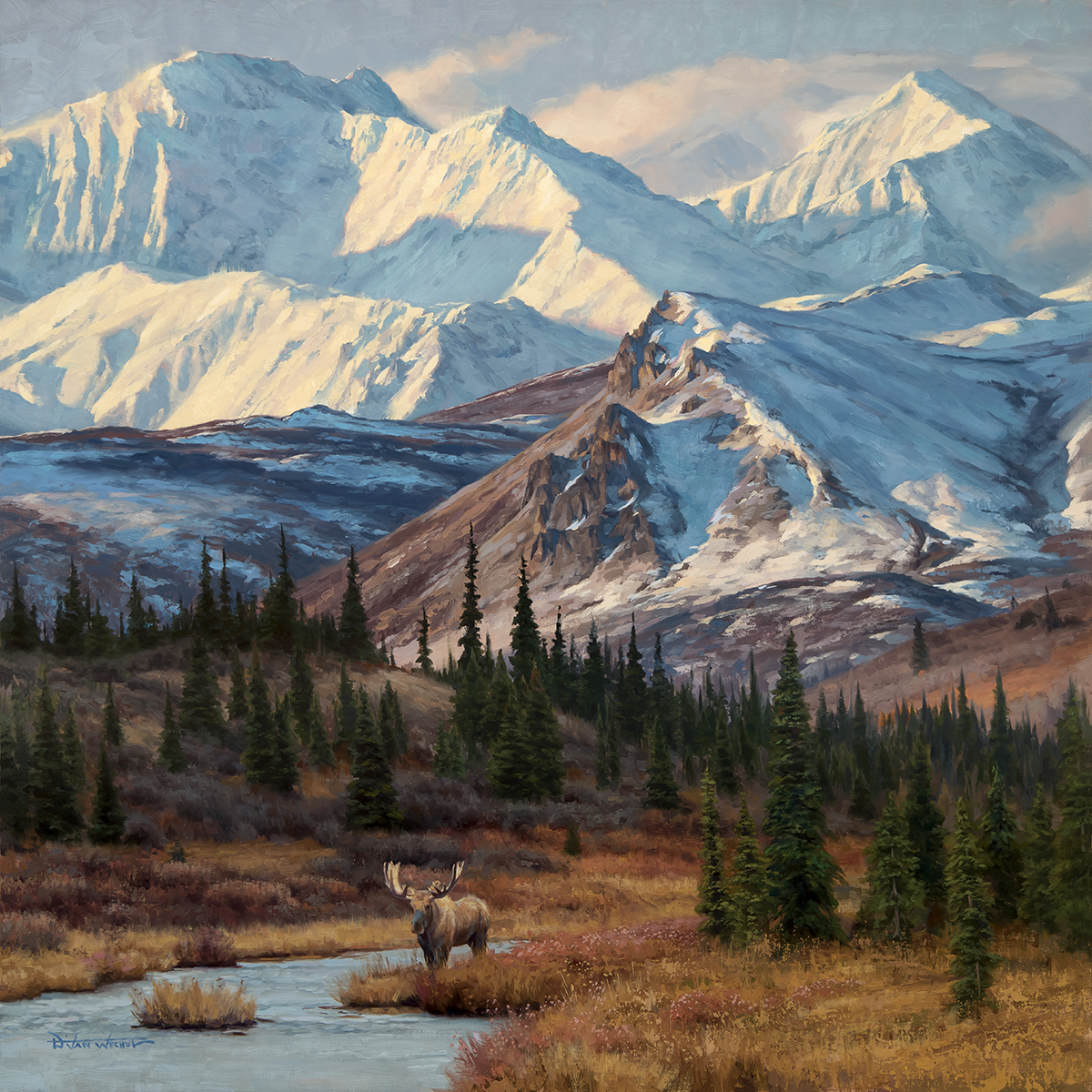Bezoar ibex average 140 pounds and possess extremely long, characteristically knobby horns in relation to body size, making it one of the most attractive members of the ibex family.
With my rifle resting on a suitcase-sized boulder, I could not get situated for a shot at the ibex high above me on the opposing slope. Changing positions, I still could not stabilize those crosshairs. Searching for a comfortable shooting position, my guide Ibo stacked three backpacks upon which I laid the forearm of my rifle, and with the butt in the pebbly soil, I found some stability and prepared for the longest shot I had ever attempted.
It was the fourth morning of my five-day hunt for the majestic bezoar ibex in the Taurus Mountains outside of Koycegiz, Turkey with Volkan Gokalp, owner of Safari Tours, and with rain expected on the fifth day, there was a bit of pressure on my guides to locate a shootable goat.
For me going down to the wire was not a concern because three of the four different ibex I shot in Spain were taken in the waning minutes of the hunt. It’s a team effort with guides proudly displaying exceptional acuity in oftentimes dangerous terrain, but the grand finale is on me to make the shot.
I spent Thanksgiving Day ensconced on a Turkish mountain slope pursuing the largest member of the ibex family. With ominous clouds in the diatance and periodic showers throughout the day, we spent the wet morning glassing the rocky, pine-littered slopes precipitating at sea level, rising to 3,000 feet above the Mediterranean Sea for the animal I traveled nearly 7,000 miles to see.
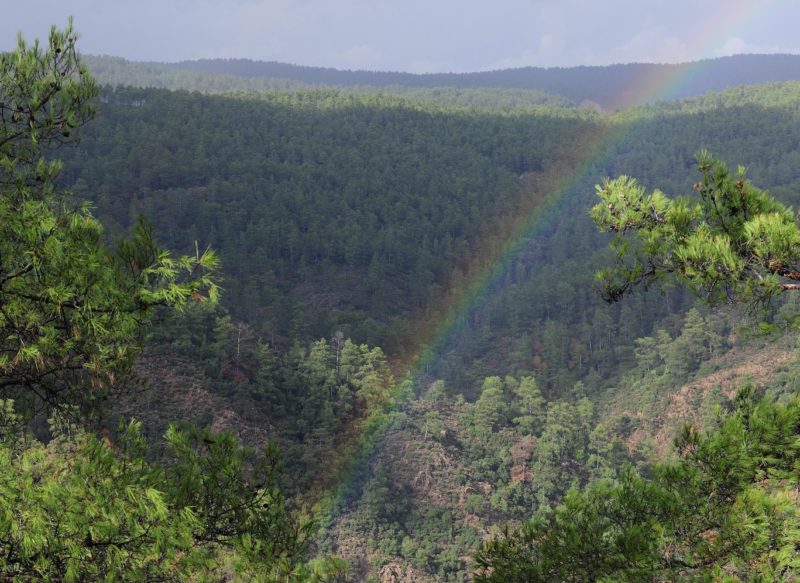
Sporadic rain interrupted by sunshine augmented sightings, but strong winds forced the animals to remain sequestered in thick cover, reducing sightings.
At first I had difficulty locating ibex in my binoculars even when they were pointed out to me, but by mid-afternoon my searching instinct kicked in, and I began picking out the camouflaged mountain dwellers in semi-open areas on the rocky slopes. By evening we had spotted 15 males, but none met the discretionary standards of my guide.
After that first day in the mountains, I realized that I would have to make a significantly long shot as all the males we saw were at extreme distances in dangerously rugged, sometimes unnegotiable terrain. Fortunately, I spent much time back home at the range in preparation of such an event and hoped it would pay off.
Bezoar ibex average 140 pounds and possess extremely long, characteristically knobby horns in relation to body size, making it one of the most attractive members of the ibex family.
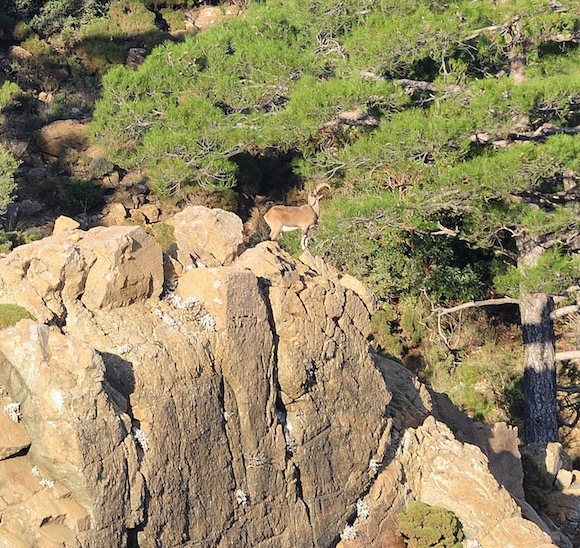
With suction cup-like hooves, ibex can negotiate extremely dangerous rocky environments with ease high above their predators.
Males exhibit a dark brown summer coat which turns grayish, appearing white in the winter. Both sexes also have a goatee-tuft of hair dangling precariously from their chin.
What makes these high country denizens so challenging to hunt is the fact that their hooves act like suction cups, enabling them to traverse steep rocky bluffs with ease, high above any predator, including man.
Although hunted from August to the end of March, the rut occurs in November and December, thus I had anticipated seeing some older, larger-horned males that are normally hesitant to move much outside the breeding season. But as the hunt continued, we failed to see any breeding activity, which made it extremely difficult to find the larger, more reticent bucks.
As darkness blanketed the slopes on that first day, we returned to our petite hotel located on the north bank of Lake Koycegiz in the town of the same name and established long before America was discovered. The ambiance of the lake and the friendly people made it a wonderful place to call home for the hunt.
At 5:30 the second morning I found myself alone in the dining area using my cell phone light to make a cup of coffee. At six Volkan showed up, and moments later Ibo appeared with several loaves of warm, fresh-baked bread from the local bakery, igniting my olfactory system.
While loading gear in the truck, a brisk cold wind permeated my fleece jacket, and it only intensified at the higher elevations. We hiked to various vantage points and glassed for an hour, sometimes two, from each, observing several males, all of which looked big to me, but none that satisfied my guides.
At mid-day, we hiked to within 200 yards of two beautiful mature males basking in sun under a large pine tree, but once again my guides showed no interest in the animals.
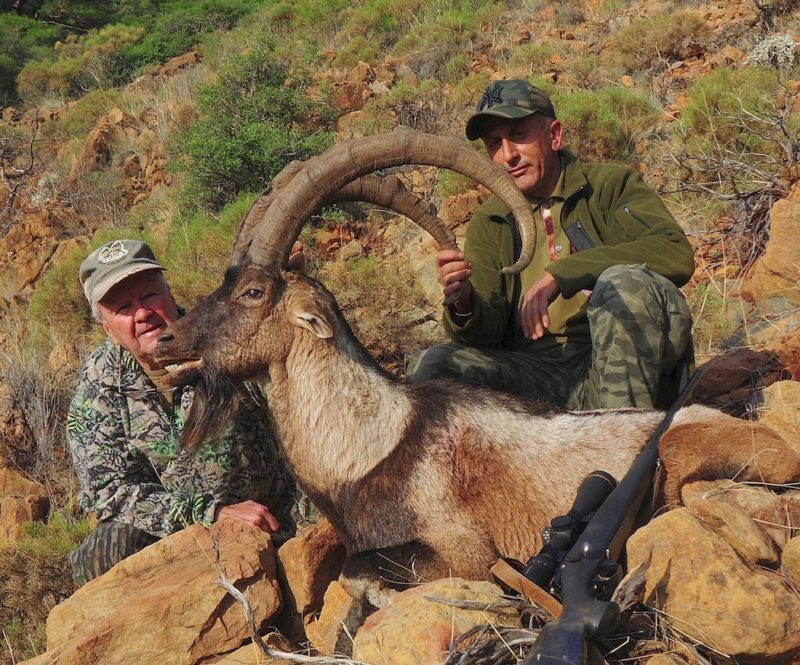
The pursuit of mountain goats is a team effort, and I had plenty of help, particularly from my new friend and professional guide, Ibo.
Passing on the larger of the two made me wonder just how big they had to be before I got the green light. As wind intensified throughout the afternoon, the animals remained sequestered in the vegetative portions of the mountains and sightings plummeted; however, the clear sky provided hope that my third day would be more productive, particularly if the wind receded.
On the third clear morning we negotiated our way through a mature pine forest to an open mountainside littered with Volkswagen-sized boulders. With five pair of eyes intensely scanning the preferred habitat of ibex, only a couple of young males and a few ewes were observed before we ventured back down the mountain to our vehicle. Attempting to drive around the mountain to glass the other side, we came upon a washout that we manually resurrected by rolling feed sack-sized rocks into the crater, but only a quarter mile further, the road vanished, and we were forced to turn back.
While enjoying olives, freshly baked bread, and tuna fish at mid-day on the tailgate, Ibo came up with a plan for the evening hunt which would require a considerable hike, with one of the guides picking us up at the bottom of the valley at dark.
At three we began our trek, at first through a dense pine forest that opened up to several expansive, boulder-laden slopes gilded by the soft evening sun, which we glassed for several hours without seeing a single mature male. We continued hiking over dangerously loose, tallus rock to other vantage points without experiencing much luck.
Three hours later we reached the bottom of the valley, paralleling a creek to our pick-up point, completing the third day. With heavy rain expected on day five, in my mind day four would be my last chance to take an animal I had dreamed about for years.
With stars flickering in the jet black sky on the fourth morning, the guides felt confident we would locate what I had traveled so far to shoot. At first light, one of the guides spotted several mature males that got them excited. Before I knew it, I was preparing for the most challenging shot I had ever attempted. Once Volkan verified that the animal was a shooter, he whispered that it was 360 yards from us. With a minor adjustment on my turret, I laid my rifle on Ibo’s backpack lying on a huge, rectangular-shaped rock protruding from the mountainside, but I could not position myself adequately enough to stabilize the crosshairs. Rapidly I moved to another position as the ibex remained undisturbed high above us, but even then I couldn’t get comfortable. I then laid flat and had Ibo place three backpacks, one on top of the other, for a rest, and with the forearm of my rifle on the backpacks and the butt on the gravelly soil, I realized some stability. With my neck arched backward in an awkwardly painful position, I placed the crosshairs several inches above the animal’s shoulder and squeezed the trigger. Upon the crack of my shot, the ibex plummeted to the rock-littered ground layer, and the high fives began as I realized the privilege of taking a ten-year-old bezoar ibex.
It was now Jan’s turn to hunt as we returned to Istanbul, a city of 13.5 million people, with an abundance of shopping opportunities, not to mention sightseeing activities like the Blue Mosque, Hagia Sophia, and the incredible Topkapi Palace where we viewed a bowl used by Abraham, David’s sword, and the staff Moses used to separate the Red Sea, culminating a great hunt in the land of the Turks.
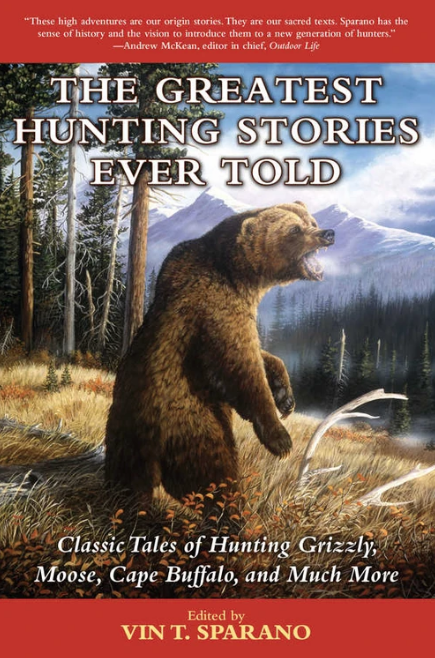 Now, for the forty million Americans who hunt, here is the perfect companion. The Greatest Hunting Stories Ever Told is a collection of true hunting tales, told by some of the most courageous and clever sportsmen. The quest for adventure has touched all these writers, who convey the drama, tension, stamina, and sheer thrill of tracking down game.
Now, for the forty million Americans who hunt, here is the perfect companion. The Greatest Hunting Stories Ever Told is a collection of true hunting tales, told by some of the most courageous and clever sportsmen. The quest for adventure has touched all these writers, who convey the drama, tension, stamina, and sheer thrill of tracking down game.
Included here are the experiences of Teddy Roosevelt in “The Wilderness Hunter,” of Jack O’Connor in “The Leopard,” of J. C. Rickhoff in “Wounded Lion in Kenya,” of Frank C. Hibben in “The Last Stand of a Wily Jaguar,” and of John “Pondoro” Taylor in “Buffalo,” among others. Buy Now

